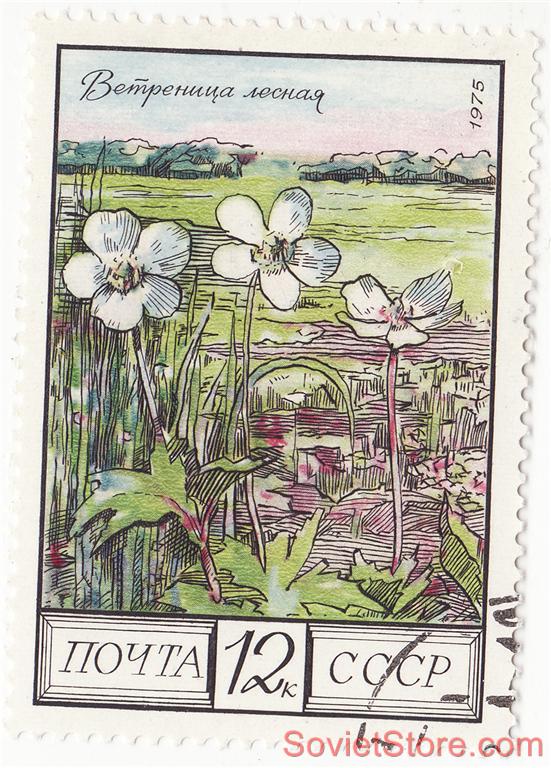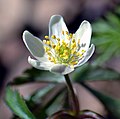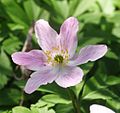SearchProduct Type
|
Add us to: Favorite Stores Item's weight: less then 1 g.
Stamp Authenticity Since 1939 till 1990 Lithuania suffered 3 occupations: 1 German (1941-1944) and 2 Soviet (1939-1941, 1944-1990), one of which lasted 46 years. In WWII occupations were based on violent battles between Germans and Russians. These historical events left a lot of stuff behind them selves. Almost every family in Lithuania has something left, related to USSR history in their forgotten drawers. So we are just traveling around lithuanian countrysides and collecting this memorabilia. Item is original, genuine, authentic, unique, not a copy or replica - has 2-12 decades of it's own unique history.
Anemone nemorosa is an early-spring flowering plant in the genus Anemone in the family Ranunculaceae. Common names include (European*) wood anemone, windflower, (European*) thimbleweed and smell fox, an allusion to the musky smell of the leaves. It is a perennial herbaceous plant, growing in early spring from 5 to 15 cm tall. (*American wood anemone is Anemone quinquefolia, a different species in the same genus. American thimbleweed, Rudbeckia laciniata, is an entirely unrelated plant.) The plants start blooming soon after the foliage emerges from the ground. The leaves are divided into three segments and the flowers, produced on short stems, are held above the foliage with one flower per stem. They grow from underground root-like stems called rhizomes and the foliage dies back down by mid summer (summer dormant). The rhizomes spread just below the soil surface, forming long spreading clumps that grow quickly, contributing to its rapid spread in woodland conditions, where they often carpet large areas. The flower is 2 cm diameter, with six or seven petal-like segments (actually tepals) with many stamens. In the wild the flowers are usually white, but may be pinkish, lilac or blue, and often have a darker tint to the back of the 'petals'. The flowers lack both fragrance and nectar and it has been suggested by some authors that they are primarily self-pollinated, but it has also been demonstrated that they are pollinated by bees and other insects that visit the flowers to collect pollen (Shirreffs 1985). The plant contains poisonous chemicals that are toxic to animals including humans, but it has also been used as a medicine. All parts of the plant contain protoanemonin, which can cause severe skin and gastrointestinal irritation. Yellow wood anemone, Anemone ranunculoides, also known as the buttercup anemone, is a similar plant with slightly smaller flowers of rich yellow colouring. CultivationMany cultivars have been selected for garden use eg Anemone nemorosa 'Allenii' which has large blue flowers. It has been awarded an Award of Garden Merit (AGM) H4 (hardy throughout the British Isles) by the Royal Horticultural Society, as have several of its cultivars (see below). The RHS Plant Finder 2008–2009 lists 70 cultivars of Anemone nemorosa (AGM H4) available from nurseries in the UK. Some of those most widely available are:
Anemone × lipsiensis, a hybrid between A. nemorosa and A. ranunculoides, has pale yellow flowers; A. × lipsiensis 'Pallida' is the best-known result of this cross. It has been awarded the AGM H4, like both of its parents. References
The free listing tool. List your items fast and easy and manage your active items. On Jul-05-08 at 12:43:51 PDT, seller added the following information:
| Return
Items must be returned within 30 days .
Refund will be given as Money back. Refund policy details: Return is accepted at any reason. Item(s) must arrive to us not later then 30 days after it was shipped out (you will be informed about this immediately after it will be done). Returned items must be the same item in the exact same condition as originally shipped. Refunds are for the final eBay item purchase price only, less a 10% restocking fee. Shipping costs, insurance, and handling charges (if any) are non refundable. Returns must be shipped insured. Shipping
Payment Method
Insurance
Not Offered (Domestic)
|
Shopping Cart |
||||||||||||||||||||||||||||||||||||||||||||||||||||||||||||||||||||||||










